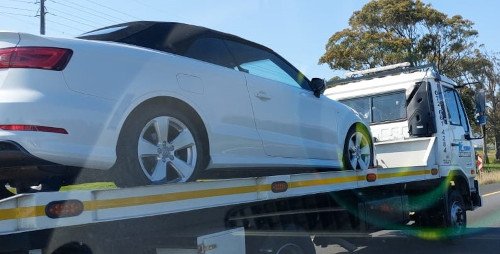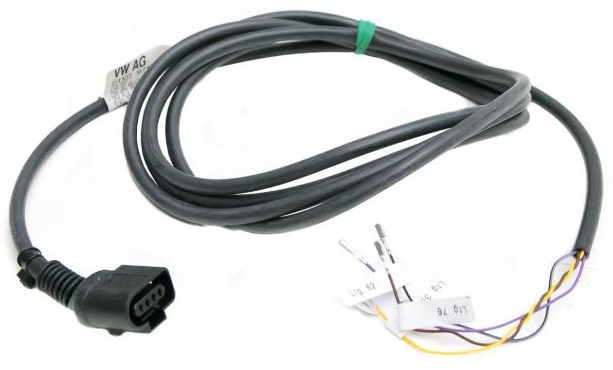The Most Common Car Problems
There was a time when car owners could easily service their own cars. Simply replacing points, plugs and condensors, draining its oil and replacing its oil and oil filter normally put the car back on the road again. Those were the days when the most common roadside problem was a puncture or a snapped fan belt. Punctures were easily fixed with a replacement tyre from the trunk. All that was needed was some elbow grease applied to the jack, wheel brace and wheel nuts and you were on the road again. But today rollbacks are are integral part of motoring. Hundreds of cars are loaded up everyday on the road side.The main cause of punctures was attributed to poor road surfaces, random metal objects and broken glass and to a lesser degree older tyre technology. Even though punctures were predominant, they were by no means exclusive to roadside breakdown because clutch plates and gearbox problems were also plentiful, as was running out of fuel.

With the advent of newer cars, the race for the most fuel efficient and
least expensive car was on. When fuel and air stoichiometrics were at
its peak, car manufactures started producing cars with a 'Space Saver Biscuit Spare Wheel' which took several kilograms of weight out of the trunk, This
made the car a tad lighter, slightly more fuel efficient and ever so
slightly, cheaper to produce.
Today, almost a third of all new cars don't even have a spare wheel; instead they may be equipped with a can of self inflating puncture-repairing foam, or an electrical air compressor with some sealant kit to temporarily fix a flat tyre. Both options are evidently cheaper than a Space Saver Biscuit Spare Wheel and lighter.
Today, almost a third of all new cars don't even have a spare wheel; instead they may be equipped with a can of self inflating puncture-repairing foam, or an electrical air compressor with some sealant kit to temporarily fix a flat tyre. Both options are evidently cheaper than a Space Saver Biscuit Spare Wheel and lighter.

However, believe-it-or-not, the more expensive cars today, are sold without a spare wheel, instead they are fitted with “run-flats”. In a nut-shell, run flats are special pneumatic tyres, designed to resist the effects of deflation when punctured, yet enables the car to be driven at reduced speeds of under 90 km/h for a distance of up to 80 km. The speed and distance of course to the nearest tyre repair shop, is subject to the type and quality of the “run-flats”. So, once again the manufacturer saves the cost of supplying a spare wheel.

Be that as it may, snapped fan belts often causing the engine to
overheat, sometimes resulted in a blown cylinder head gasket. Subsequently, the modern day electric radiator fan has totally supperceeded the belt driven fan and as a result,
burst radiator hoses, corroded, leaking water pumps and welch plugs have became the primary cause of blown cylinder head
gaskets. The other bugbear is oil leaks that weren't timeously attended to, currently trending as
the most common cause of seized engines.
With the abundance of electronics fitted into cars, the alternator and its voltage regulator have became a lot more more troublesome than ever before. Obviously due to the additional electrical load. Alternator problems are closely followed by starter issues when either its brushes or its bendix reaches its end of life.
With the abundance of electronics fitted into cars, the alternator and its voltage regulator have became a lot more more troublesome than ever before. Obviously due to the additional electrical load. Alternator problems are closely followed by starter issues when either its brushes or its bendix reaches its end of life.

Both types of problems have resulted in batteries being replaced prematurely and sometimes unnecessarily. Brakes and Turbos also give their fair share of problems, but none of these problems comes close to the new type of roadside breakdowns caused by the OBD-II system.
The most common cause of breakdowns today, is the Electronic Power Control (EPC) light; not that the light is the cause of the problem. The Electronic Power Control (EPC) light is only an advisory light, drawing your attention to a possible malfunction or pending problem or already existing problems.
When the Electronic Power Control (EPC) light comes on, without the ESP or Check engine light, the car is normally still driveable, even if it goes into limp mode. But when accompanied by the ESP and or CEL (check engine light) the car may refuse to start as its inhibited by the Electronic Computer Unit (ECU).
When this happens, the only solution is to secure a rollback to fetch the car and take it either to your service agent / mechanic or your home, so that you can tend to the problem yourself.
There is no way you'd be able to effect repairs to your car yourself without a OBD II scanner that would direct you to, or confine your repair to a certain area of the engine.

Below are a few sample yet partial ODB II diagnostic scans for Electronic Power Control (EPC) problems.
This for a 7N0 - VW Passat.
Address 01: Engine (CDL) Labels: 06F-907-115-CDL.clb
Part No SW: 1P0 907 115 AB HW: 8P0 907 115 B
Component: 2.0l R4/4V TFSI 0020
Revision: 5BH20--- Serial number: 0000
Coding: 0303004C18070160
1 Fault Found:
008487 - Accelerator Position Sensor 2 (G185)
P2127 - 002 - Signal too Low
Address 01: Engine Labels: 06A-906-032-AWP.lblPart No: 06A 906 032 RNComponent: 1.8L R4/5VT G 0001Coding: 07510
18047 - Accelerator Position Sensor 1/2 (G79/G185)
P1639 - 35-00 - Implausible Signal
18042 - Accelerator Position Sensor 2 (G185)
P1634 - 35-10 - Signal too High - Intermittent
Electronic Power Control (EPC) problem for a 7L - VW Touareg
Address 02: Auto Trans Labels: 09D-927-750.lbl
Part No: 09D 927 750 AN
Component: AL 750 6A 0546
Coding: 0004153
1 Fault Found:
00777 - Accelerator Position Sensor (G79)
004 - No Signal/Communication - MIL ON
NB! The Automatic Transmission module and not the Engine Module detected this accelerator sensor problem.
Electronic Power Control (EPC) problem 1H - VW Golf/Vento III
Address 02: Auto Trans Labels: 01M-927-733.LBL
Controller: 01M 927 733 CT
Component: AG4 Getriebe 01M 3363
Coding: 00000
1 Fault Found:
00518 - Throttle Position Sensor (G69)
16-10 - Signal Outside Specifications - Intermittent
NB! The Automatic Transmission module and not the Engine Module detected this accelerator sensor problem. Here the Throttle position sensor instead of the Accelerator sender is the cause of the problem.
Electronic Power Control (EPC) problem for a 9M - VW Jetta IV.
Address 01: Engine Labels: 06A-906-032-AWP.lbl
Part No: 06A 906 032 RN
Component: 1.8L R4/5VT G 0001
Coding: 07510
1 Fault Found:
18047 - Accelerator Position Sensor 1/2 (G79/G185)
P1639 - 35-00 - Implausible Signal
Electronic Power Control (EPC) problem for a 8E - Audi A4.
Address 01: Engine Labels: 06C-909-559-ASN.lbl
Part No SW: 8E0 909 559 D HW: 8E0 909 059
Component: JHM V3/9X G 0003
Coding: 0016751
2 Faults Found:
18047 - Accelerator Position Sensor 1/2 (G79/G185)
P1639 - 008 - Implausible Signal - Intermittent
18047 - Accelerator Position Sensor 1/2 (G79/G185)
P1639 - 008 - Implausible Signal - Intermittent - MIL ON
Electronic Power Control (EPC) for a 8P - Audi A3.
Address 01: Engine Labels: 06A-906-033-BGU.lbl
Part No: 06A 906 033 DS
Component: SIMOS71 1.6l 2V 5559
Revision: --H03--- Serial number: AUX00000
Coding: 0000071
4 Faults Found:
18047 - Accelerator Position Sensor 1/2 (G79/G185)
P1639 - 008 - Implausible Signal - Intermittent
18042 - Accelerator Position Sensor 2 (G185)
Electronic Power Control (EPC) problem for a 9M - VW Jetta IV
Address 01: Engine Labels: 06A-906-032-AWP.lblPart No: 06A 906 032 LPComponent: 1.8L R4/5VT G 0005Coding: 07500
P1634 - 35-00 - Signal too High
18039 - Accelerator Position Sensor (G79)
P1631 - 35-00 - Signal too High
Electronic Power Control (EPC) problem for a 1C - VW New Beetle
Address 02: Auto Trans Labels: 01M-927-733.lbl
Part No: 01M 927 733 EN
Component: AG4 Getriebe 01M 4108
Coding: 00000
1 Fault Found:
00518 - Throttle Position Sensor (G69)
16-10 - Signal Outside Specifications - Intermittent
NB! Once again the Automatic Transmission module detected this Throttle position sensor instead of the Engine Module detecting the Accelerator sender to be the cause of the problem.
___________________________________
As can be seen from the data above, there are essentially 3 types of DTC errors responsible for triggering the EPC light, though not exclusively. P codes P1630 and P2122; P1631 and P2123; P1632 and P1861 are essentially the same and applies to sender 1.
As can be seen below.
P1633 and P2127; P1634 and P2128; P1639 and P2138 are essentially the same but applies to sender 2. There are also several other DTC errors that can and trigger the EPC and or along with the ESP, and or with the CEL.
Accelerator Pedal Sensor 1
P1630 - Accelerator Pedal Pos. Sensor 1 (G79), Signal too LowP1631 - Accelerator Pedal Pos. Sensor 1 (G79), Signal too HighP1632 - Accelerator Pedal Pos. Sensor 1 (G79), Power Supply MalfunctionP2122 - Accelerator Pos. Sensor 1 (G79), Signal too LowP2123 - Accelerator Pos. Sensor 1 (G79), Signal too HighP1861 - Accelerator Pos. Sensor 1 (G79), Error Message from ECM
Accelerator Pedal Sensor 2
P1633 - Accelerator Pedal Pos. Sensor 2 (G185), Signal too LowP1634 - Accelerator Pedal Pos. Sensor 2 (G185), Signal too HighP1639 - Accelerator Pedal Pos. Sensor 1/2 (G79) / (G185), Implausible Signal
P2127 - Accelerator Pos. Sensor 2 (G185), Signal too LowP2128 - Accelerator Pos. Sensor 2 (G185), Signal too HighP2138 - Accelerator Pos. Sensor 1/2 (G79) + (G185), Implausible Signal
Throttle Position Sensor
16505/P0121/000289 - TPS (G69): Implausible Signal
16506/P0122/000290 - TPS (G69): Signal too Low
16507/P0123/000291 - TPS (G69): Signal too High
Throttle Angle Sender 1
17950/P1542/005442 = Angle Sensor 1 for Throttle Actuator (G187): Implausible Signal
17951/P1543/005443 = Angle Sensor 1 for Throttle Actuator (G187): Signal too Small
17952/P1544/005444 = Angle Sensor 1 for Throttle Actuator (G187): Signal too High
Throttle Angle Sender 2
16605/P0221/000545 - Angle Sensor 2 for Throttle (G188): Signal Implausible
16606/P0222/000546 - Angle Sensor 2 for Throttle (G188): Signal Too Low
16607/P0223/000547 - Angle Sensor 2 for Throttle (G188): Signal Too High
Depending on the model of your vehicle, its Throttle position sensor (TPS) lowest output voltage should be around .17 Volt and when the Electronic Control Unit (ECU) detects that it has dropped below that, then it will trigger either a P0122 or P0222 code. High signals are not common but they do occur.
As can be seen from the above data the error signal is either too low or to high or intermittent/implausable. Bearing in mind that a constant 5 volts is supplied by the ECU via a High-side or Low-side driver to the each of these potentiometers (senders). Loss of the voltage or even intermittently loss will trigger the EPC light and enter into "limp mode".
By implication the monitored output is in 1 of 3 states, viz, low, high, or intermittent. In order to determine these states, the ECU needs a reference to compare these signals against. Each sender therefore act as a reference for another and any discrepancy between the two can result in an EPC error and subsequent limp mode.
Replacing the Accelerator Pedal sensor (potentiometer) unit normally fixes the EPC problem, but limp mode can also be caused by the throttle butterfly potentiometer. And like I mentioned before, an OBD-II diagnostic tester would make this repair a lot easier and a lot faster.
NB! When your car goes into "limp mode", you may have a lit "Engine Management Light" (EPC icon) and or a "Electronic Stability Light" (skidding car icon) and or a "Engine Control Lamp" (engine icon) or any other combination thereof.
vw polo fault codes list, vw polo power steering failure, epc light vw polo loss of power, vw polo power steering not working, vw polo epc light and loss of power, vw polo power steering reset, vw polo engine management light loss of power, vw polo limp mode, vw polo 1.4 engine problems, vw polo limp mode, epc vw polo, vw polo common faults, vw login codes, vw polo door lock problem, vw polo throttle body problems, vw 01044, vw polo fuel pump problems, vw polo power steering fuse location, vw polo power steering pump problem, volkswagen polo fuel pump problem, epc light vw polo, vw polo central locking problems, epc polo, vw polo accelerator problems, vw polo power steering sensor location, vw polo error codes, vw polo epc, polo power steering not working, vw relay numbers, vw polo epc light, Accelerator Pedal Position Sensor 2 G185, Accelerator Position Sensor G79, Volkswagen, vw polo fault codes list, vw polo power steering failure, epc light vw polo loss of power, vw polo power steering not working, vw polo epc light and loss of power, vw polo power steering reset, vw polo engine management light loss of power, vw polo limp mode, vw polo 1.4 engine problems, vw polo limp mode, epc vw polo, vw polo common faults, vw login codes, vw polo door lock problem, vw polo throttle body problems, vw 01044, vw polo fuel pump problems, vw polo power steering fuse location, vw polo power steering pump problem, volkswagen polo fuel pump problem, epc light vw polo, vw polo central locking problems, epc polo, vw polo accelerator problems, vw polo power steering sensor location, vw polo error codes, vw polo epc, polo power steering not working, vw relay numbers, vw polo epc light, Accelerator Pedal Position Sensor 2 G185, Accelerator Position Sensor G79, Volkswagen, DTC, On Board Diagnostic, Body Codes, Bluetooth OBDII Scanner, vehicle diagnostics, OBD2,OBD-II, CAN bus, OBD2 parameter IDs (PID), OBD2 scanner, Diagnostic Trouble Codes (DTCs), 16 pin OBD2 connector, DLC, ISO 11898, SAE J1962, OBD3/OBD-III, CAN logger, B codes, WiFi, OBD2 frames, IoT logger, OBD2 Data, OBD2 blackbox, Scanner, Network Codes, Diagnostic tools, Code Reader,Mobile Car Diagnostics,OBD-11 Scanner,OBD dongle, J1939, diagnostics,universal codes,Diagnostic trouble codes,Check Engine Light, P codes, C codes, ISO 15765, U codes, car diagnostic tests, CPU,OBD Cables, Diagnostic cables, Key programming, fuel management system,engine control unit, EPC light, limp mode











